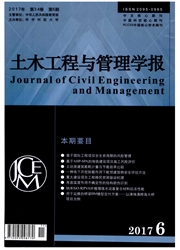

 中文摘要:
中文摘要:
在实际桥梁结构中,基于有限元分析得到的结构模型动力特性与测量结果相比往往有较大的出入,甚至超出了工程实践中所要求的精度,因此需要借助实验分析和模型修正技术对有限元模型进行修正。本文首先对有限元模型修正和传感器优化布置方法进行了详细的归纳和总结,并且分析了动力有限元模型修正中存在的一些问题。然后,通过具体的算例对近年的研究成果进行了总结,其中包括基于灵敏度分析和优化理论对一现有大型桥梁进行了有限元模型修正,以及基于序列法和改进遗传算法对一桥梁进行了传感器优化布置,研究结果可广泛应用于桥梁结构的损伤识别、既有(受损)结构的承载力评定和结构的长期健康监测,具有较大的理论意义和工程实用价值。
 英文摘要:
英文摘要:
For actual bridge structures, large discrepancy often exists between dynmaic characteristics of structural model based on finite element(FE) analysis and measuring result, and it even exceed the precision required of engineering practice. The FE model need to be updated based on the experimental analysis and mod- el updating technique. In the paper, the methods about FE model updating and optimal senor placement (OSP) are generalized detailedly, and some problems about dynamic FE model updating are analyzed. In the end, research results during recent years are summarized, which include FE model updating of an exsisting bridge based on sensitivity analysis and optimization theory, and OSP of a bridge based on serial method and improved genetic algorithms, the research results can be applied to bridge structures like damage detection, health monitoring, structural control, structural evaluation and assessment and it has a great theoretical and engineering value.
 同期刊论文项目
同期刊论文项目
 同项目期刊论文
同项目期刊论文
 期刊信息
期刊信息
